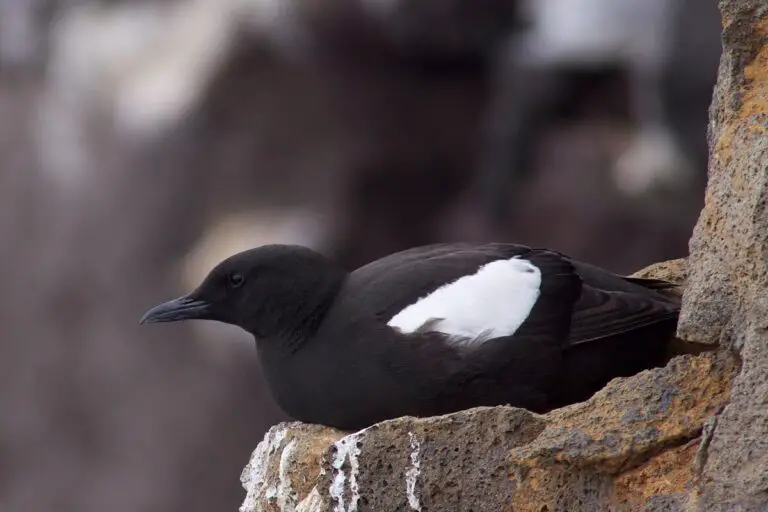Can Turtles & Dogs Get Along?
It’s true that not all animals are compatible with dogs, and it’s important for pet owners to consider the specific needs and behaviors of each species before introducing them to one another. Turtles, especially smaller ones, can be vulnerable to dogs due to their size and anatomy. Responsible pet ownership involves understanding and managing these potential risks to ensure the safety and well-being of all animals involved.
While it’s unlikely that a turtle has an opinion on dogs in the way humans do, their behaviors and instincts can provide insights into their compatibility with other animals. When a turtle and a dog are placed together, there is a risk of harm to both parties, especially if the dog is larger or more aggressive. Dogs may see turtles as prey or may become curious and try to play with them, leading to potential injuries to the turtle. Conversely, turtles may react defensively to a dog’s presence, potentially biting or scratching in self-defense. It’s crucial for pet owners to supervise interactions between different species closely and take appropriate precautions to prevent harm.
Do Dogs Get Along With Turtles & Tortoises?
We adore dogs because they are lively and full of life. However, other tiny creatures may be endangered by this activity.
When introducing a dog to a turtle for the first time, caution is crucial. Dogs, driven by curiosity, may pose a danger to turtles if they pick them up or try to play with them. While it’s possible to teach dogs to coexist peacefully with turtles, it requires patience and commitment. Close supervision is essential to ensure the safety of both animals, as neither would be safe if left unsupervised together.
Turtles’ shells provide some defense, but they are not indestructible, and a dog’s playful behavior could lead to serious harm. Stress from such interactions can weaken a turtle’s immune system, making them more susceptible to illness. Additionally, large turtles like snapping turtles may pose a threat to small dogs. Given the potential for conflict between these two species, maintaining harmony in the same household can be challenging.
You must also take into account how the different animals react to one another. You shouldn’t push the turtle and the dog to interact since doing so might make either animal sick.
It would be preferable to give them each their own space in the house.
Do Dogs Eat Turtles?
Even well-fed dogs, known for hunting small animals like lizards and rodents, may be compelled to pursue a turtle if they encounter one. Despite a turtle’s sturdy shell, dogs are capable of breaking them, as witnessed in instances where dogs have attempted to consume live alligators, albeit with some injuries.
While there’s little evidence of dogs consuming turtles, they have been observed chewing on them, possibly mistaking them for chew toys. The mere presence of a dog can be traumatic for turtles, even if they aren’t physically harmed. Though dogs don’t typically eat turtles, they may still gnaw on their shells.
Do Turtles Eat Dogs?
It has been discovered that snapping turtles can consume dogs. It seems that their diets consist of more than just vegetation and tiny fish.
The omnivores often consume a wide variety of organisms, including insects, spiders, frogs, snakes, birds, small mammals, and even members of their own species, however, adorable, dying pups are not a to be a regular menu item for them.
How To Tell That Your Turtle And Dog Might Not Get Along?
Many canines are quite comfortable living with any other kind of pet. Sadly, not every dog has this trait.
In deciding whether or not to introduce your dog to a new pet, you should think about its personality.
Dogs with aggressive or anxious tendencies may struggle to coexist harmoniously with other pets in the household. Turtles, unlike many other household pets, can resemble chew toys or snacks to dogs, leading to potential harm if the dog sees the turtle as a plaything.
Any puncture wounds to the turtle’s shell from a dog’s teeth require immediate veterinary attention, as the shell does not guarantee safety. Regardless of the dog’s size, large turtles and tortoises can pose a threat, potentially causing harm or even death to small dogs. In such cases, it’s advisable to prevent contact between the turtle and the dog, as training the turtle to coexist with the dog may prove challenging.
Alternatively, you might decide without obtaining either of the pets.
1. Signs And Signals Of The Body
You shouldn’t let your dog alone with your pet turtle if they exhibit any of the nonverbal cues signs listed below:
- Stalking
- Growling
- Chewing
- Barking
2. Extra Indicators
Dogs may also exhibit the following behaviors if they do not like to share their environment with turtles:
- Worrying Actions
- Making an effort to gnaw on the shell of the turtle
- Crouching
What Pets Get Along With Turtles?
If you have a pet turtle and it’s happy being on its own, know that there are turtles that do best when kept in groups. Compatible species are:
- Koi fish: It is possible for koi fish and turtles to coexist, particularly in the case of smaller turtles.
However, it is important to remember that turtles must be tiny in size and well-fed.
- Plecos: The same holds true for smaller plecos and turtles of a similar size. However, you shouldn’t ever house more gigantic turtles among larger plecos.
- Hermit Crabs: Hermit crabs are one of the few creatures that can share a habitat with turtles without being harmed by either.
- Honey Gourami: One of the most stunning fish you may maintain with your turtle is the honey gourami.
These fish have the capability of moving around within the Java ferns and Anubias that you put in the tank in a way that is completely unanticipated.
- The Rainbow Shark: You may safely keep an aggressive fish like a rainbow shark in the same tank as your turtle.
If you have a turtle in your aquarium and you add a rainbow shark to the tank at the same time, you will observe that the turtle swims away from the fish very quickly. This is because the rainbow shark is aggressive.
- Tiger Barbs: To give a splash of color to your aquarium and since they are the least aggressive fish, tiger barbs are a great choice to have beside your turtle.
Can A Dog Get Sick From A Turtle?
Salmonella bacteria, commonly found in reptiles like turtles, pose a risk to dogs if they come into contact with infected animals, such as through licking. Salmonellosis, the illness caused by Salmonella, can affect both humans and dogs, leading to a range of symptoms including dehydration, diarrhea, fever, lethargy, vomiting, and more.
While most dogs have strong immune systems capable of fighting off Salmonella, older dogs and puppies are more susceptible to infection. It’s worth noting that even antibiotic-treated dogs can still develop Salmonellosis, and the bacteria can be transmitted between dogs through saliva and feces. Thus, it’s essential for pet owners to be aware of these risks and take appropriate precautions to prevent infection.
Why Are Dogs Attracted To Turtles?
The fact that dogs seem to be drawn to turtles might be due to a number of factors. A dog’s interest in a turtle may stem, at least in part, from the animal’s appearance.
Dogs may be fascinated by turtles due to their unusual, ancient appearance. It’s also possible that dogs think them to be rather appetizing. Dogs could like the taste of turtles since they are a good source of protein.
Because of their tough shells and moderate pace, dogs may study turtles without feeling intimidated.
Last but not least, it’s likely that dogs are drawn to turtles since they perceive them as prospective friends with whom they might play.
Dogs can find turtles entertaining to chase and play with because of their erratic movement.
Can A Dog Bite Through A Turtle Shell?
In many instances, a dog’s powerful bite can easily crush the bones and break the shell of a turtle in a short amount of time. If, for any reason, a dog perceives a turtle as a tempting chew toy, the turtle could endure significant suffering as a result.
It’s crucial for pet owners to recognize and prevent such situations to ensure the safety and well-being of all animals involved.
Can Dogs Eat Turtle Meat?
While dogs can consume turtle flesh as it provides a protein-rich source that can be beneficial for them, it’s essential to ensure it’s properly cooked before offering it to them. Raw turtle flesh may contain harmful bacteria that could make your dog ill.
Therefore, it’s important to only provide cooked turtle meat to your dog to minimize the risk of bacterial contamination and ensure their health and safety.
Before feeding your dog turtle flesh, it’s crucial to consider several factors. Firstly, ensure that the turtle is in good condition and free from any toxins. Certain types of turtles can be harmful to dogs and should be avoided entirely. Additionally, some turtles may carry bacteria such as salmonella, which can lead to serious health issues if ingested by your dog.
Start by offering your dog a very small amount of turtle flesh initially. Monitor your dog closely for any signs of discomfort or adverse reactions. If your dog tolerates the turtle flesh well, you can gradually increase the amount given.
It’s important to introduce turtle flesh to your dog gradually and in the proper manner to minimize the risk of any negative effects on their health. Always prioritize your dog’s well-being and consult with a veterinarian if you have any concerns or questions regarding their diet.
It is also essential to bear in mind that not all canines have a positive attitude toward turtles. There is a possibility that some canines may avoid eating turtles, while others could not even like the flavor.
Can A Snapping Turtle Kill A Dog?
If a dog goes too near to a snapping turtle, the dog may suffer injuries, and the turtle may potentially kill or gravely injure a puppy or a tiny dog.
In addition, regardless of the size of your dog, giant turtles and tortoises pose a danger to your pet. They may do physical injury to your dog.
On the other hand, a giant turtle or tortoise might easily take the life of a small dog.
Before You Go…
While most dog owners have good intentions, it’s common for us to anthropomorphize our pets, sometimes overlooking their inherent dog instincts. Despite the majority of dogs not posing a threat to turtles, and even though they may live together peacefully for years, a single incident can lead to unforeseen consequences.
Given that dogs aren’t entirely devoid of risk, it’s incumbent upon us to ensure they stay away from our turtles. This responsibility extends to all animals that could be perceived as predators. By prioritizing the safety of all creatures involved, we fulfill our duty as responsible pet owners.





